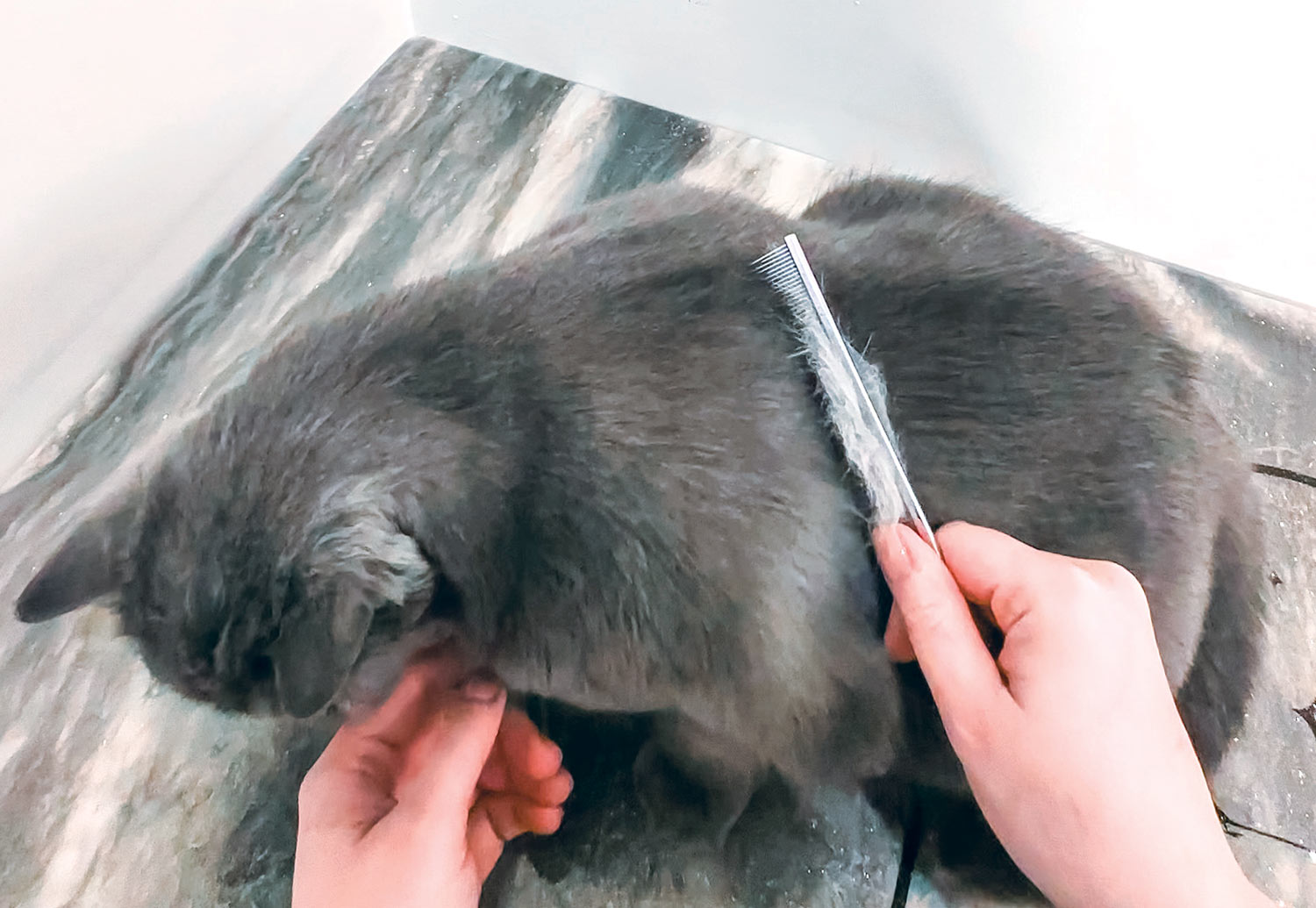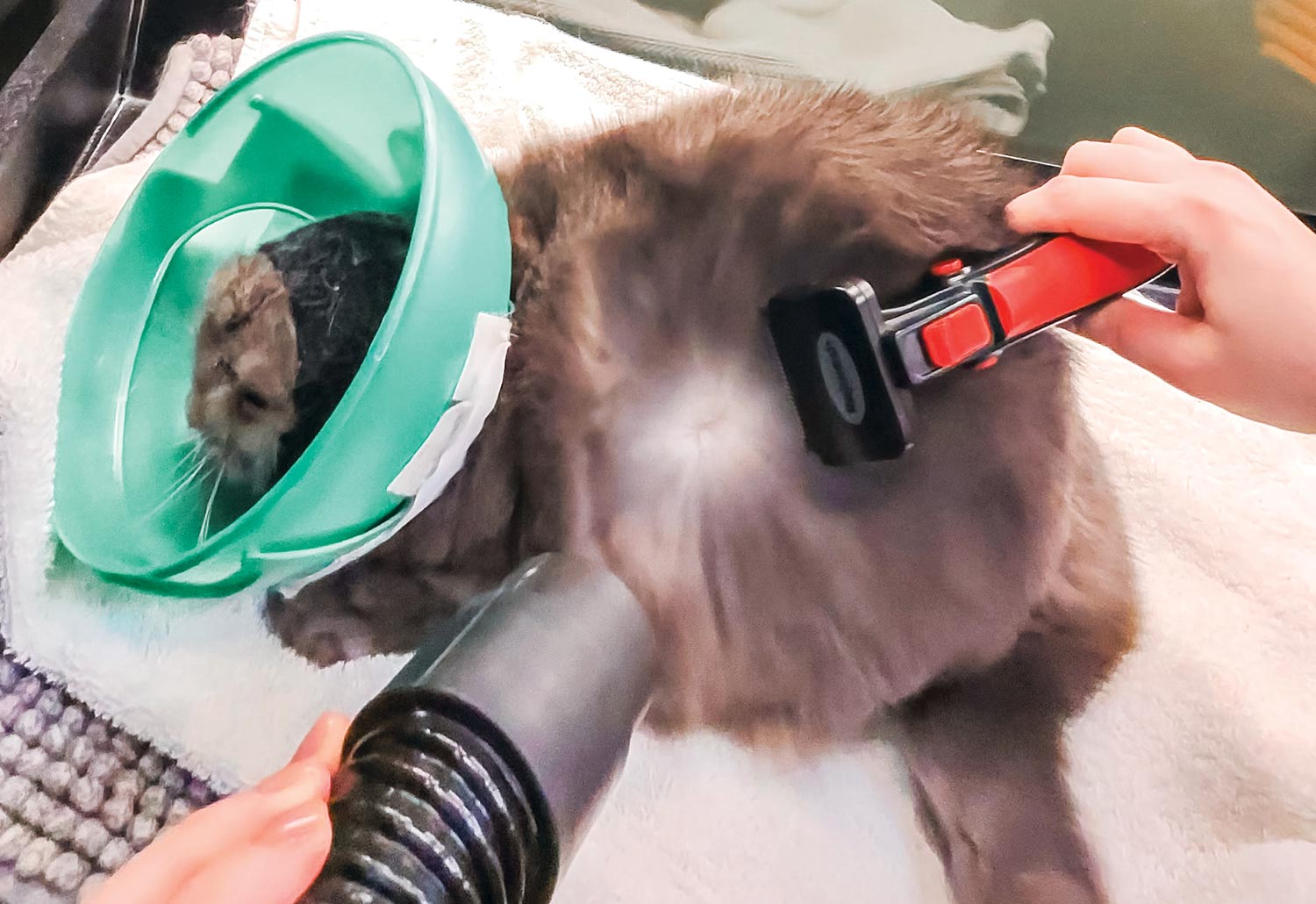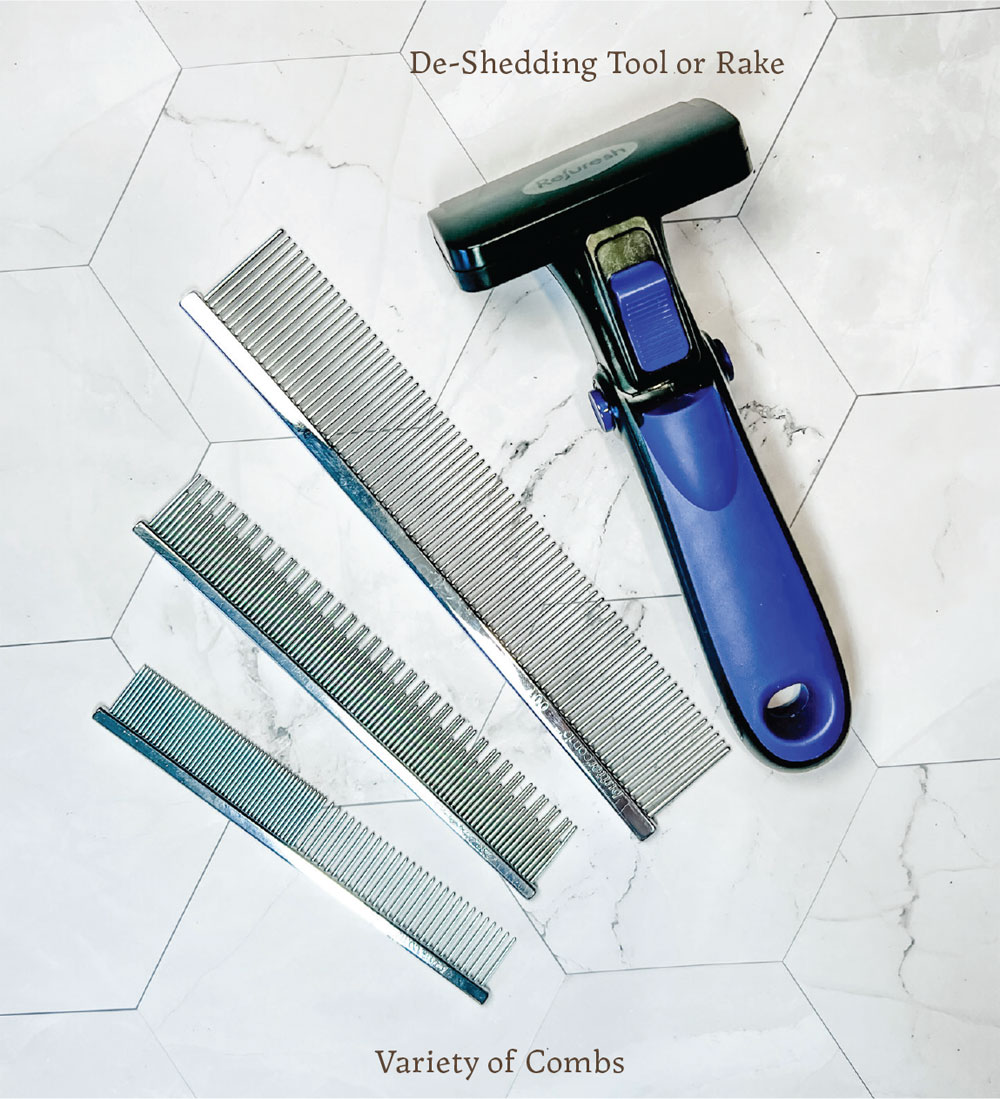
by Lynn Paolillo

The Ultimate Guide to De-Shedding Cats
 hedding is a natural part of a cat’s life, but for cat owners and groomers alike, it can be a hairy nightmare—literally. Other than a few coat mutations, all cats shed, although some more noticeably than others.
hedding is a natural part of a cat’s life, but for cat owners and groomers alike, it can be a hairy nightmare—literally. Other than a few coat mutations, all cats shed, although some more noticeably than others.
The key to managing this mess lies in understanding how to effectively and safely de-shed a cat. This involves more than just brushing; it’s about using the right combination of bathing, blow-drying and tools that are gentle yet effective.
Before diving into the de-shedding process, it’s essential to understand why cats shed. Cats naturally shed dead hair to make room for new growth, and the amount of shedding can vary by breed, coat type and time of year. Surprisingly, short-haired cats can often be the hairiest of the bunch, especially those with a thick, dense hair texture.
Excessive shedding can lead to hairballs, matting and even digestive blockages from ingested hair. Therefore, regular de-shedding not only benefits cat owners, but also promotes the cat’s overall health and wellbeing.

For short-haired cats, tool recommendations include a rubber curry brush, comb with staggered teeth, de-shedding tool and a boar bristle brush.

Here are a few best practices for bathing cats:
- Use Shampoo Designed for Cats: Always use a shampoo formulated for cats to minimize potential irritation of their skin. Hypoallergenic shampoos are a good option for cats that are sensitive to fragrances, but thorough degreasing starts with effective products.
- Thoroughly Soak with Water: Warm water should completely saturate the cat’s coat in order to distribute the shampoo all the way to the cat’s skin and to help loosen dead hair for easier removal. And always make sure to rinse thoroughly to remove all shampoo residues.
- Gently Massage the Coat: During the bath, gently massage the coat with your fingertips. This helps to loosen dead hair without tugging or pulling.
- Skip the Conditioner and Leave-In Sprays: The role of these products makes sense when grooming dogs, as we tend to brush them extensively in order to break up tangles. But cat matting and clumps need to be squeaky clean and free of residue in order for dead hair to slide out easily, and so as not to leave residue behind for the cat to lick off.
Pro Tip: Pre-bath brushing or combing should be limited, as clumps of dead, dirty hair can cause discomfort to the cat, leading to irritated skin and aggravated, aggressive behavior. Clean, blow-dried hair releases more easily.
Here are some considerations for choosing the right dryer:
- High-Velocity (HV) Dryers: These professional-grade dryers use powerful airflow to remove loose hair quickly and efficiently. However, they can be noisy, so it’s essential to introduce the dryer gradually and preferably with a variable speed in order to avoid scaring the cat.
- Catty Shack Vac: For particularly nervous or sensitive cats, consider using a containment unit like the Catty Shack Vac. This allows cats to move freely while being safely dried without the noise and force directly hitting them.

For long-haired cats, the primary tools used are a variety of combs and de-shedding tools or rakes with smooth, rounded teeth so as not to cut hair or damage skin.

Once the cat is clean and dry, it’s time to remove the bulk of dead hair using combs. Combing not only removes loose fur, but also prevents tangles and mats from forming. However, it’s crucial to use the right techniques and tools to ensure the cat’s comfort and safety.
Here are some effective combing techniques:
- Start with the Wider Side: Begin with the wider (or coarser) side of a greyhound-style comb to gently break up any larger bulks of hair. Move on once the comb glides through the coat without snagging.
- Follow with Finer Combs: After detangling, switch to a comb or side of the comb that has teeth spaced closer together to remove loose undercoat hair. Be careful not to use combs that are too fine for some areas of the body. For example, a face/feet comb shouldn’t be used on the body of a Persian, whereas it is necessary for their paws, legs, head and face.
- Focus on Problem Areas: Pay extra attention to high-shedding areas, including the chest, belly, back legs and tail. These areas are more prone to matting and clumping.
Pro Tip: Work in sections rather than trying to comb the entire cat in one go. If you hit a snag, use short, quick strokes to break up the dead hair if possible. Mats that are larger than the size of a quarter may require shaving instead of being pulled out with a comb.
De-shedding isn’t just about keeping a home fur-free; it’s about maintaining a cat’s overall health. Regular grooming and de-shedding reduces hairballs, minimizes matting and keeps a cat’s coat in optimal condition.
Step 4) De-Shedding: Choosing Safe Tools
Not all de-shedding tools are created equal. Some can be too harsh for delicate cat skin, leading to irritation or even injury.
Here’s what to look for when selecting safe de-shedding tools:
- Gentle, Rounded Tips: Choose combs and brushes with rounded teeth or tips to avoid scratching the cat’s skin. Metal tools should have polished, smooth edges.
- No Blades or Cutting Edges: Avoid tools with blades or sharp edges that can cut or damage the topcoat. Cats have delicate skin, and even light pressure can cause injury.
- Ergonomic Handle: A comfortable, non-slip handle ensures better control, reducing the risk of accidental scraping or tugging.
De-shedding isn’t just about keeping a home fur-free; it’s about maintaining a cat’s overall health. Regular grooming and de-shedding reduces hairballs, minimizes matting and keeps a cat’s coat in optimal condition. Long-haired cats are more commonly recommended a regular grooming routine, but short-haired cats can often be unexpectedly heavy shedders. Grooming schedules can range from every four to twelve weeks, depending on the cat’s grooming needs and if the owner is able to do any additional combing at home.
As professional groomers, mastering the art of de-shedding means choosing the right tools, products, and techniques tailored to each cat’s unique coat type and temperament. By educating cat owners on the importance of regular de-shedding and teaching them how to maintain their cat’s coat through a combination of professional grooming appointments and home maintenance, we not only make our jobs easier, but also enhance the quality of life for our feline clients.
